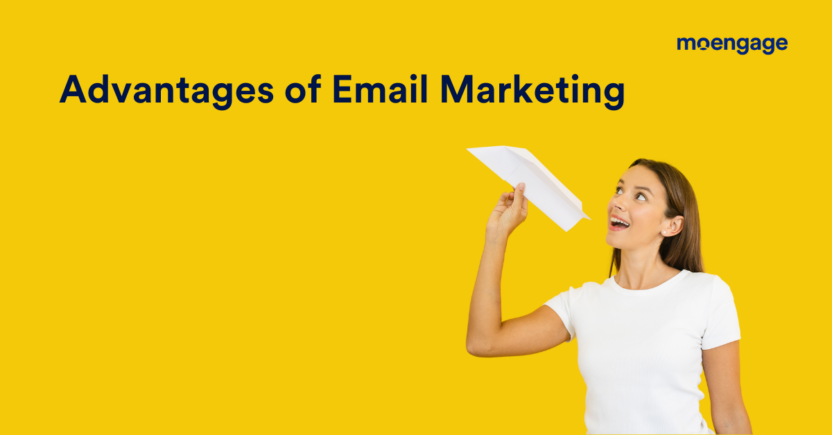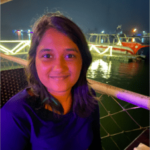Email Marketing Advantages and Disadvantages

Reading Time: 5 minutes
Email marketing is an excellent medium for directly engaging customers – we’re sure you know that. But what are the email marketing advantages and disadvantages? A small error in your campaigns can become a huge branding mistake. A popular retail brand, for example, once had to send an apology email to its list because it accidentally sent the same email multiple times. This became an embarrassing issue for the brand, and they had to cover up the chaos with an email apology.
In this article, we will explore the advantages and disadvantages of email marketing and the regulatory considerations surrounding it to help you create better overall campaigns.
Advantages of Email Marketing

Email marketing is one of the most popular marketing channels for a reason. Let’s examine the top email marketing advantages for B2C brands.
1. High ROI
Unlike traditional marketing channels such as TV, print, or radio advertising, email marketing is both efficient and cost-effective. It offers an unmatched return on investment. The average ROI for an email campaign is $36 for every $1 spent.
2. Journey-based Marketing
One of the top email marketing advantages is its ability to execute journey-based marketing. Journey-based marketing involves sending the right communications to customers at the right time. For this, you’ll have to analyze the customer’s journey and figure out the best communication for each point in the journey. Once this is done, you can set up automated customer journey-based emails to be sent at strategic times.
3. Hyper-Personalization
When you personalize your emails, you let your customers know you understand them and their needs. This has a direct impact on metrics such as open rates, click rates, and conversion rates. MoEngage’s latest Email Marketing Benchmarks Report shows that personalization causes a 16x increase in conversion rates. Hyper-personalized emails also drive 18 times more revenue than broadcast emails.
4. Segmentation
Personalization goes hand in hand with segmentation, which is another of the major email marketing advantages. Segment customers according to their purchase history, interests, demographics, and psychographics and send out personalized campaigns accordingly. According to our Email Benchmarks 2025 Report, behavior-based segmentation leads to a 9x increase in critical metrics such as open and conversion rates.
Disadvantages of Email Marketing

Now that we’ve looked at email marketing advantages, we also need to check out the potential risks associated with this channel. Here are the top email marketing disadvantages.
1. Deliverability Issues
The average bounce rate for an email marketing campaign is 10.4 percent. Emails can end up in the spam folder due to multiple reasons. Use of suspicious keywords like “make money”, “earn cash” and similar terms can increase the chances of being flagged as spam. Inadequate email authentication protocols like Sender Policy Framework (SPF) and DomainKeys Identified Mail (DKIM) can become another major factor that results in the emails ending up in the spam folder.
2. Privacy and Compliance Issues
Strict regulations like the General Data Protection Regulation (GDPR) in the European Union and the CAN-SPAM Act (Controlling the Assault of Non-Solicited Pornography And Marketing Act) in the United States require businesses to obtain prior consent from customers before sending them marketing emails. If a business fails to comply with the same, they will have to pay heavy penalties.
3. Irrelevant Email Lists
One of the biggest email marketing disadvantages is that it’s tedious to manually manage an email list of relevant customer emails and keep an eye on subscribers and unsubscribes. It’s best to automate and leave the details to a reliable email marketing platform for such things. You should also regularly clean out inactive and outdated email IDs from your email list.
4. Reputation Risk
A compliance issue, grammatical error, poor design, or similar mistakes in email marketing campaigns can quickly hamper your brand’s domain reputation. A damaged brand reputation can directly impact customer trust and company sales. To prevent this, make sure you double-check every aspect of your email before you send it out.
5. Device Compatibility
An email template that is compatible with your web browser may not give you an ideal viewing experience on your mobile phone. You must ensure that the emails are well-optimized for viewing on mobile devices because most email views come from mobile devices. If your subject lines are too long, they’ll get truncated, and your messaging experience won’t be as good as expected.
For example, an iPhone cuts off email subject lines over 32 characters. To make the iPhone customer engage with the email, the subject line should catch the reader’s interest within 32 characters. A poorly designed email can lead customers to lose interest in the brand and create a weak brand image.
6. Email Overload
Finally, another of the email marketing disadvantages is email overload or fatigue. Ever looked at your inbox and felt overwhelmed by the sheer number of emails flooding it? That’s what happens when customers get bombarded with emails daily. In such a scenario, making your emails stand out can be tough. And if you can’t do it, recipients might even delete your emails without reading them, for who’d want a cluttered inbox?
Overcoming the Challenges of Email Marketing
Now that you’ve understood email marketing advantages and disadvantages, here are some effective ways to overcome the challenges and kick-start your next campaign.
Clean and Maintain Your Email List
Sunsetting is a strategy that keeps email lists clean by removing inactive customers. Inactive customers decrease the deliverability ratio of emails and increase the risk of being marked as spam.
Brands should employ organic email collection methods instead of purchasing an email list. A high unsubscribe rate can also result in low email deliverability and increase the risk of being marked as spam.
Segment Your Audience
Segment your email audience based on their behavior, demographic information, browsing history, and more factors. Only then can you send them emails that they actually resonate with – emails based on their needs, preferences, and interests. For example, you can send emails recommending eyewear cases to customers who have recently bought glasses.
Optimize Your Campaigns
Studying the performance metrics of your past email marketing campaigns can provide solid insights into customer response. A low open rate, for example, can be due to a weak subject line that fails to capture interest. Performance metrics must be analyzed regularly, and email marketing campaigns should be optimized accordingly.
Email Marketing Advantages and Disadvantages: Wrapping Up
As you can see, understanding email marketing advantages and disadvantages is crucial for creating effective email campaigns. Email marketing is one of the most cost-effective ways to communicate directly with customers. The trick to ace this communication medium is to hyper-personalize emails, trigger emails in a systematic and non-spammy format, and incorporate engaging visuals and elements. By using these strategies, you can make your emails shine in crowded inboxes while generating an excellent return on investment.
To get the most out of this medium, you need a powerful email marketing platform like MoEngage. It allows you to effortlessly build no-code emails and automate your campaigns. Want to see how? Take a free demo.
















